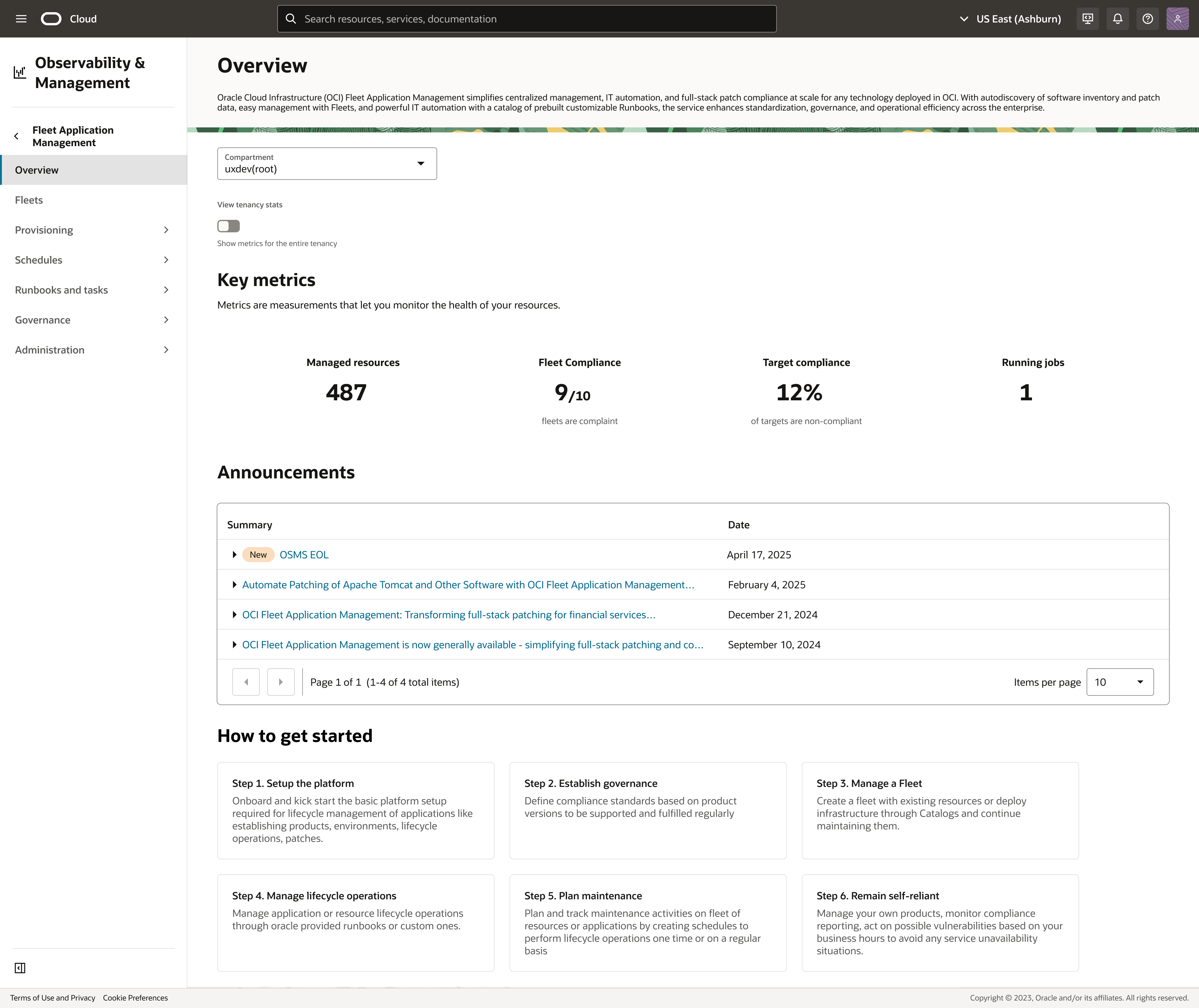Oracle Cloud Infrastructure (OCI) OCI Fleet Application Management introduces several updates aimed at improving automation and control of patching and configuration tasks at scale. Key enhancements include improved performance, Terraform integration with configuration locking, and features that simplify onboarding and lifecycle operations across large environments.
Read on for a breakdown of the new capabilities:
Terraform support in runbooks
Custom runbooks now support deploying a Terraform package, including configuration files. This enables automated provisioning of OCI services or applying configuration changes as part of patching or other operational tasks.
Locked configurations for Terraform
Platform administrators can now lock approved configurations for specific Terraform templates. This helps prevent drift and ensures deployments follow organizational policies for security, quotas, and cost management.
Curated catalogs of standardized Terraform templates
Organizations can now use curated catalogs to drive consistent provisioning. The public catalog includes prebuilt templates—such as OCI Landing Zones—that support secure, well-architected tenancies and workloads. Customers can also customize and share their own templates and configurations via private catalogs.
Improved performance
A new plugin, enabled during onboarding, improves the performance of autodiscovery and patch automation in large environments. It supports thousands of concurrent operations with increased scalability and security.
Runbooks auto-versioning
Each time a runbook is created or updated, the version is automatically incremented. Users can select which version to run via the Scheduler or Fix-Now functionality.
Distributed cloud support
OCI Fleet Application Management is now available in Alloy and Dedicated Region Cloud@Customer (DRCC) environments upon request.
Onboarding improvements
IT administrators can now enable the service at the compartment level in addition to the tenancy level. This provides greater flexibility for organizations managing multiple teams or applications in a shared cloud tenancy.
Consolidated fleet types
This release introduces a unified “generic” fleet type, replacing previous categories like Product and Environment fleets. This simplifies fleet creation and allows mixed runbook operations (patching, Terraform provisioning, configuration changes) on the same group of resources.

Get started for free
OCI Fleet Application Management includes a free tier that supports management of up to 25 resources—such as virtual machines or databases—per month at no cost. Users can run unlimited operations on these resources, including running different runbooks, patching various technologies, and scheduling IT tasks.
